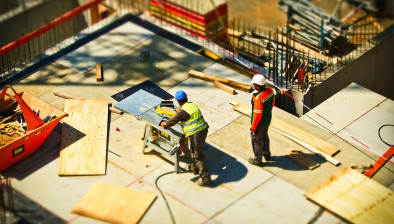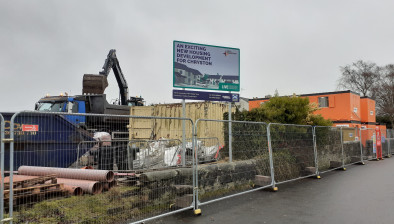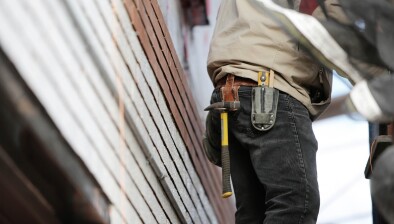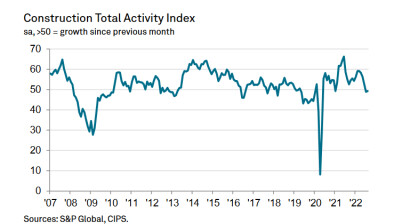October sees 2.3% fall in construction output
Construction output recorded its largest monthly fall since January 2018 as it decreased by 2.3% in October 2019.

The fall was largely due to a 3.1% fall in new work, with repair and maintenance also decreasing by 0.6%.
The latest bulletin from the Office for National Statistics also shows a 0.3% drop in construction output for three months of August to October 2019, compared with the previous three-month period.
This was driven by a fall of 1.4% in repair and maintenance, with a smaller positive contribution from 0.3% growth in new work.
In repair and maintenance, the fall in the three months to October 2019 was largely because of the 3.6% decline in private housing repair and maintenance, with public housing repair and maintenance also falling 0.8%.
New orders grew by 0.3% in Quarter 3 (July to Sept) 2019, this follows a fall of 14.5% in Quarter 2 (Apr to June) 2019; the rise in Quarter 3 2019 was driven by an 8.2% increase in new housing but offset by a 3.5% fall in all other work.
Mark Robinson, Scape Group chief executive, said: “October marked another dreary month for the construction industry as it experienced the largest monthly fall in growth in almost two years and total output fell by a very significant £309 million.
“The industry has been spiralling towards a recession since the Brexit vote and it can only take so much more bad news. A lack of clarity over immigration and trade policies, as well as ongoing economic uncertainty, has forced construction bosses across the country to pause existing projects and hold off on making decisions on new work, which is evident through the large falls in repairs and maintenance, infrastructure projects and private housebuilding revealed today.
“However, the General Election outcome does have the potential to create a bounce back in activity in the New Year, so the industry will be holding its breath for a new Government which has a clear mandate to implement a fiscal strategy and one that can make clear and concise decisions that will provide clients and construction firms with the confidence to press ahead with projects. However, on the flip side, a hung parliament could send the industry into further instability and disarray.”
Gareth Belsham, director of the national property consultancy and surveyors Naismiths, said: “Two steps forward, one big step back. After a surprisingly buoyant third quarter, Britain’s builders slipped back into decline in October.
“The largest month-on-month fall in nearly two years all but wiped out the steady gains made in Q3, dragging the industry back to its painfully familiar pattern of stagnation.
“Such an abrupt fall in new work is particularly worrying, and suggests contractors simply don’t have enough new jobs to replace completed projects.
“While new orders held steady in the third quarter – a marked improvement on the wasteland of Q2 – order books are now getting worryingly thin.
“Warning lights have also come on in the residential sector. Housebuilders have long been the standard bearers for the construction industry as a whole, but even they saw output slide badly in the three months to the end of October.
“The industry’s prospects now look as finely balanced as Thursday’s election. A decisive result should finally bring some clarity to the market and shake it out of its slumber, but for now many investors are opting to defer decisions, starving contractors of demand and keeping the industry trapped in its light-headed inertia.”
Allan Callaghan, managing director of Cruden Building, part of the Cruden Group, added: “The fall in output activity in the sector does not reflect what we are experiencing at Cruden Building, having recently been awarded contracts to deliver in the region of 1,000 units. This will go some way to addressing the shortage of housing and we are making good progress in delivering a range of mixed tenure homes for rental and affordable private sale.
“In fact, across the Cruden Group, we have set ambitious targets to further expand activities and boost housing delivery by 25% over the coming year and already have a healthy pipeline going in to 2020.”

















